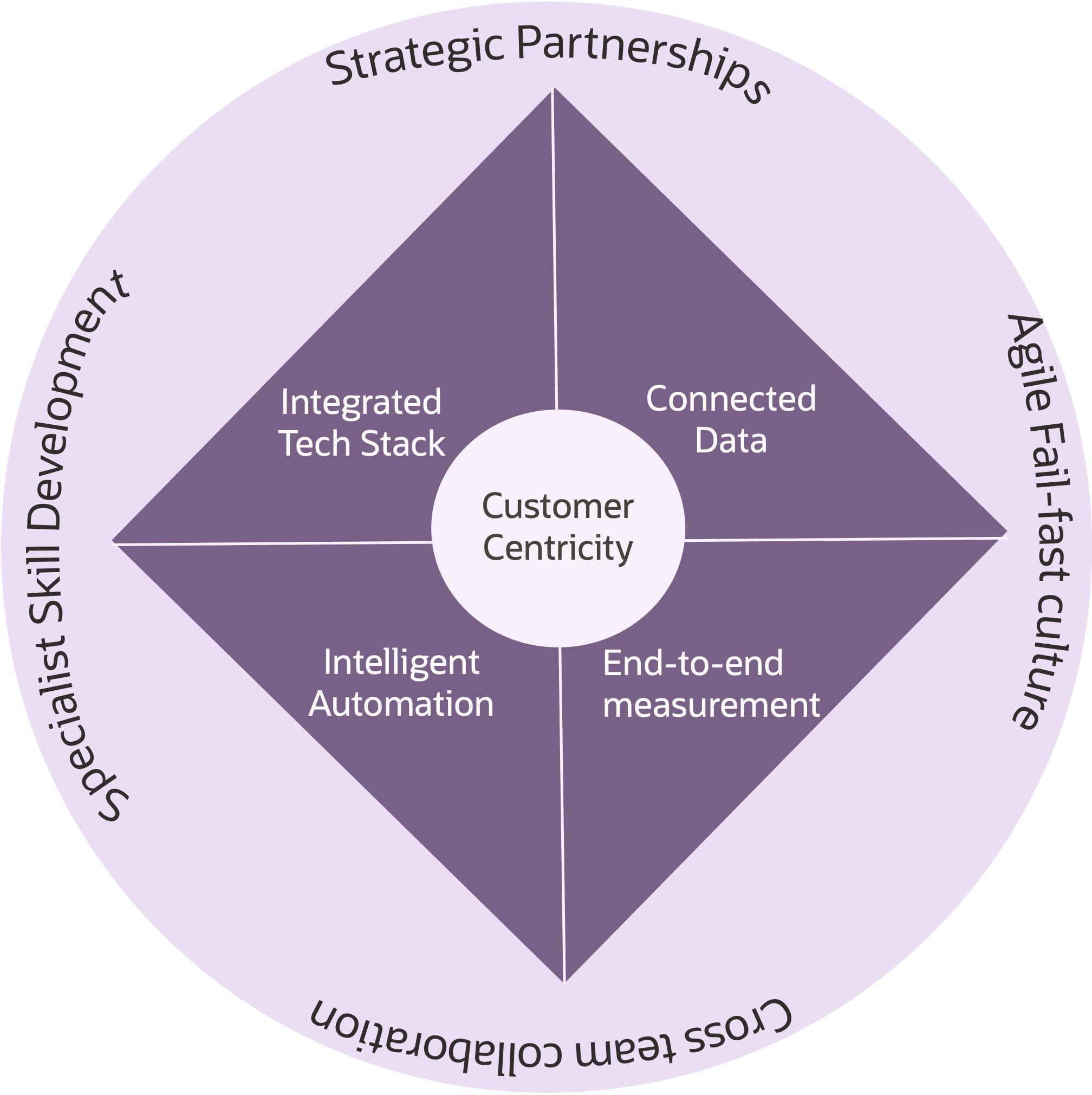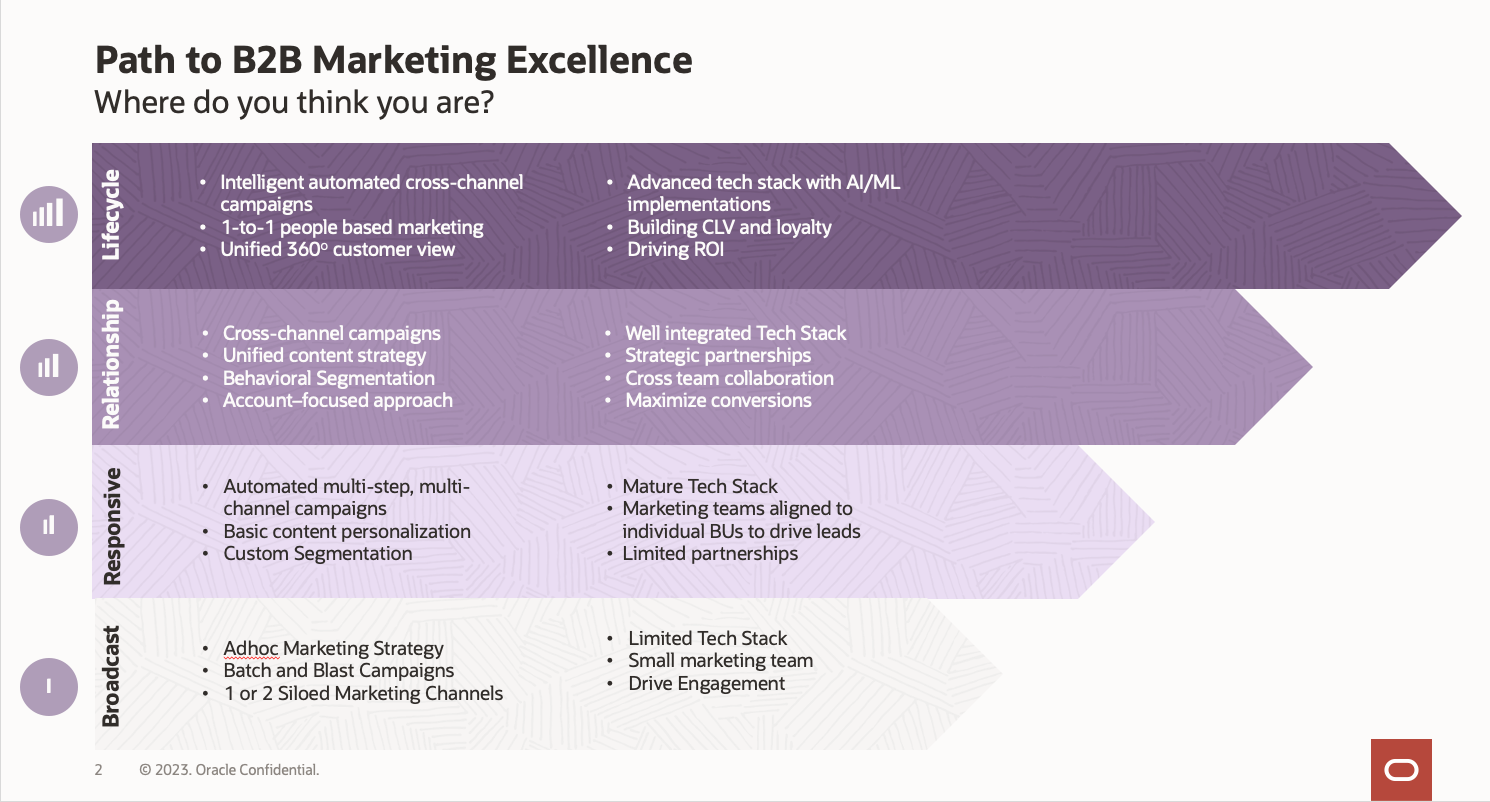“Marketing has changed more in the last 3 years than in the last 50 years.”
As a marketer, I understand how fast the marketing landscape is changing. With new technologies and market trends, changing customer priorities and expectations, each organization needs to keep regular check-ins on its state of marketing maturity. Keeping that in mind, Oracle’s CX Marketing COE team has designed a core framework to base your organization’s marketing maturity and understand where you are on the Path to Marketing Maturity.
Each marketer’s maturity level is unique, yet specific core competencies define each maturity level across all marketers.
A model released by BCG focuses on measuring digital marketing maturity using a combination of organizational and technological drivers. Keeping that baseline and layering it with the customer-centric approach needed in today’s world, the framework bases itself on organizational priorities, collaboration, and technologies employed to be a customer-centric organization.

From the entry-level to the highly transformative marketer, each organization’s maturity level is unique, yet there are core competencies that define each maturity level across all marketers. The marketing maturity level will be determined based on how successfully an organization has implemented a marketing strategy using technological and organizational enablers.
Level 1: Broadcast Marketing
It’s widely recognized that adding automation to existing processes for sending emails dramatically improves efficiency and lowers costs. At Oracle, we believe that one of the initial steps towards advancing in the digital marketing journey involves automating marketing tasks to make customer acquisition more cost-effective and enhance overall marketing effectiveness. Most, if not all, companies have adopted some form of marketing automation, often starting with a single channel, such as email. And like many traditional sales methods, this is often viewed as a volume game – the more emails you send, the more engagement you will get. It’s a great way for typical mid-sized companies to kickstart their marketing efforts.
Typically, marketing teams in such businesses are modest in size and manage their operations internally. The technology stack they use is often limited in scope, with minimal integrations or partnerships in place.
Level 2: Responsive Marketing
This is where it becomes more of a conversation than a 1-way push. At this stage, marketers can react and respond to customer behaviors and engage with customers across multiple channels. The marketing strategy is more targeted with personalized communications to improve conversion rates. The tech stack is mature and integrated to provide more accurate and reactive customer communication. The focus is also on bringing collaboration between sales and marketing to drive maximum qualified leads.
Level 3: Relationship Marketing
In this stage, we see organizations unifying their marketing strategies at the enterprise level by building strong cross-team collaboration and strategic partnerships. They embrace the importance of a well-integrated tech stack and unified data to increase conversions and repeat purchases by connected experiences across marketing channels and increasing the relevancy of their marketing programs and offers. This is quite sophisticated marketing and probably the current state of marketing excellence today. Marketers in this stage try to drive maximum business value from target prospects and existing customers by focusing on maximizing conversions, cross-sell, and up-sell.
Level 4: Lifecycle Marketing
This stage is all about delivering a unified brand experience across all customer touchpoints. The ultimate goal is to reduce customer churn and maximize customer lifetime value by delivering a relevant, consistent, and continuous experience at each customer touchpoint. Central to this stage in the journey is a people-based approach that enables connected customer intelligence across marketing, sales, commerce, service, and loyalty. This is where an organization has a complete view of a customer’s journey and focuses on constantly improving their experience by building a unified customer view and using artificial intelligence to deliver the right message at the right time on the right channel.

The path to marketing maturity is different for all marketers and, at many times, can edge between maturity levels. No matter where you are starting along the maturity path, the goal should be to grow your maturity by adapting to align with customer needs using people, processes, and technology.
Want to assess where you are on your path to Marketing Maturity? Contact askcoe_cxmarketing_ww_grp@oracle.com to schedule your free assessment.
